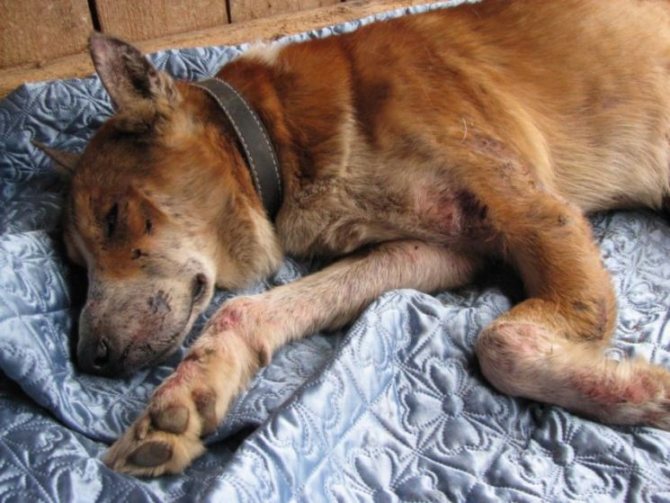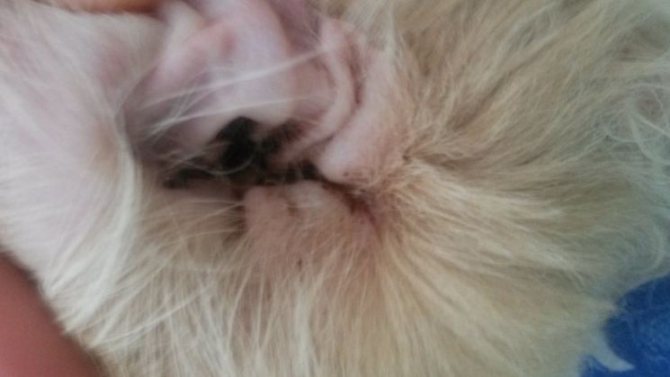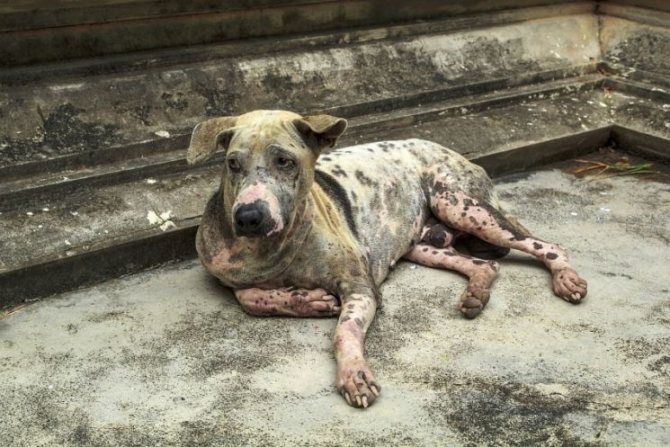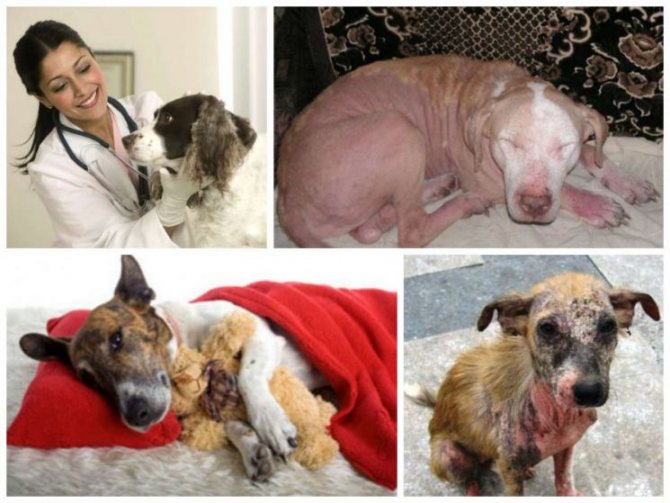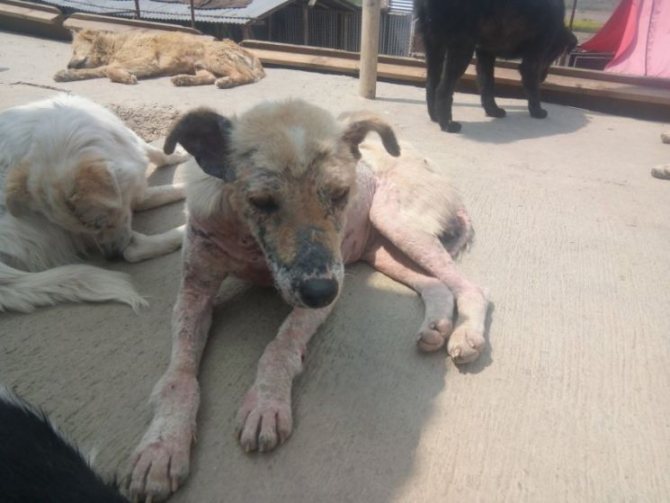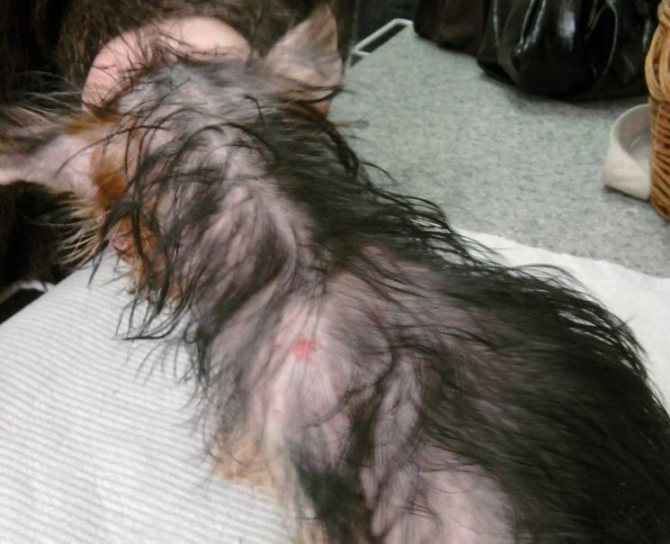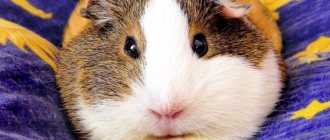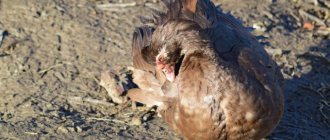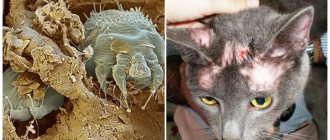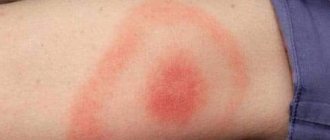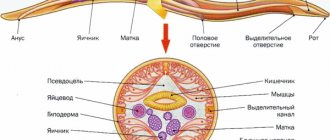Infection of dogs with scabies mites. How is scabies infection manifested. The first symptoms and development of the disease. How to distinguish scabies from other diseases. How is the diagnosis of the disease carried out, what you need to pay attention to. Is there a danger to humans. Correct treatment. preventive actions.
Pets are often attacked by parasites. For example, when a pet is attacked by fleas or a tick is sucked in, we can quickly detect these parasites and apply the correct treatment. But when microscopic mites attack, it is impossible to detect them, the infection can only be understood by the manifestation of symptoms. Next, we'll look at the microscopic parasites that cause scabies in dogs.
Skin diseases in dogs
According to veterinary statistics, parasitic pathologies are ranked 5th among the common ailments of dogs and cats. Dermatitis is the leader in the list of diseases, followed by diseases of the urinary system, food poisoning and injuries.

Top 10 diseases of cats and dogs
There are many factors that provoke damage to the skin of animals:
- allergic reactions;
- exposure to parasites;
- the influence of fungi and bacteria.
Parasitic pathologies occur in 11.6% of cases.


According to statistics, diseases of parasitic origin are in 5th place
According to the location of the parasites, this group of diseases is divided into 4 varieties.
Table 1. Varieties of diseases
| Categories | Characteristics | Representatives |
| Outdoor | Attack the surface of the skin. | Black beetles, leeches, fleas, mosquitoes and ticks. |
| Dermal | They are introduced into the epidermis. | Sarcoptic, otodectotic, notoedrosis and cheiletious mites. |
| Cavity | They populate body cavities that have access to the external environment. | Trichomoniasis, oral amoeba, lamblia. |
| Internal | Parasitizes in the circulatory system and intestines. They can migrate to other organs. | Trichinella, painting plasmodia, roundworm. |
The most common pathology in this group is flea dermatitis. In second place is scabies.
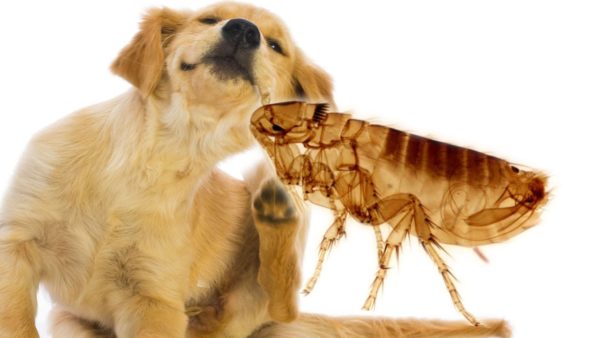

Flea dermatitis is the most common parasitic pathology
Danger of infection for humans
A scabies mite will feel great in the body of any warm-blooded creature, so it is quite possible to get infected with it from an animal.


The scabies mite is highly contagious, so the owner can easily pick up the disease from the pet.
The first signs of parasite invasion appear after 15-20 days, therefore, having noticed the symptoms of scabies in a pet, the owner should take preventive measures:
- Treat all objects in the house with disinfectants, since the scabies mite could linger on any of them.
- Treat upholstered furniture with a steamer or iron it with an iron.
- Wash the dog's bed and wash the toys in boiling water and soap.
- The brush you used to brush your dog should be replaced!
Attention. A dog with scabies must be isolated in a separate corner of the room, but leaving the dog alone is contraindicated. The pet needs to buy new toys, try to maintain a good mood, and encourage them with treats after medical procedures.
Classification of varieties of scabies
Among arachnoentomoses - a group of parasitic pathologies, the culprits of which are hymenoptera insects and arachnid mites, scabies are often found in animals.
Scabies is a skin disease caused by the mites Sarcoptes canis, Otodectes cynotis, Cheyletiella Yasguri and Notoedres cati. Infection occurs through bodily contact with an infected individual. In rare cases - while outdoors or in public places.
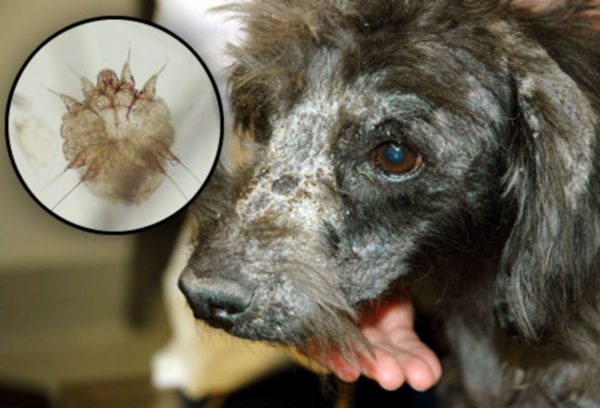

Most often dogs are attacked by Sarcoptes сanis.
The term "scabies" refers to several diseases of the skin caused by exposure to a particular parasite:
- sarcoptic mange causes sarcoptic mange;
- otodectotic - otodectosis;
- notoedrosis - notoedrosis.
- heyletious - heyletiosis.
Pet owners usually equate scabies with "itchy scabies". This definition combined 2 diseases: sarcoptic mange and notoedrosis. The first pathology is the leading one among arachnoentomoses. Demodectic mange, commonly referred to as iron, and often referred to as scabby pathologies, does not apply to those.
Itchy scabies is considered the most dangerous. The structure of the oral apparatus of the parasite makes it possible to make moves in the epidermis at high speed, which causes unbearable pain to the animal.


Itching is caused by microscopic mites that live in the epidermis.
Why scabies is dangerous
Scabies mites are aggressive organisms that do not leave their host without medical intervention. The longer they are in the epidermis, the more damage they cause to the animal's body.
Table 2. Characteristics of the main consequences of the negative impact of parasites
| Problem | The provoking factor |
| Decreased immunity | Itching has a pathological effect on the behavior, mood and physical condition of the pet. The animal is constantly itching, as a result of which it loses interest in food. The exhaustion that occurs as a result of loss of appetite negatively affects the immune system. |
| Intoxication of the body | With an increase in the colonies of parasites in the skin, the volume of waste arising in the process of the vital activity of ticks increases. Once in the bloodstream, they provoke toxic reactions. |
| The growth of pathogenic microflora | In the foci of irritation, skin inflammations form - dermatitis. Gradually, they become covered with a dense crust, which impedes the access of oxygen. This leads to increased growth of putrefactive bacteria. |
| Infectious diseases | Purulent foci penetrate into the deep layers of the skin and cause severe itching. By combing the wounds, the dog makes them deeper, thereby widening the passage for infectious diseases. |


Scabies is dangerous for the development of infectious pathologies
Over time, the number of parasites on the skin of the animal increases. This provokes a worsening of inflammatory processes and generalization of the disease.
There are malfunctions in the work of the cardiovascular and respiratory systems. If treatment is not promptly started, scabies can be fatal.
Possible complications and how to avoid them
The spread of scabies mites leads to a significant deterioration in the condition of the dog. Due to severe itching, she cannot sleep, play, walk, eat, and itches all the time. The growth of the parasite population leads to an increase in their waste products, which are very toxic. They enter the bloodstream, causing intoxication.
Crusts on damaged areas obstruct the passage of air. This leads to the active multiplication of bacteria, as a result of which purulent foci of infection are formed, penetrating deeper and deeper into the skin.
Such complications can be avoided only with timely diagnosis of scabies and an integrated approach to treatment. It is recommended to regularly examine the dog, in case of any suspicious changes, consult a doctor.
Itchy scabies in dogs
The disease is accompanied by severe skin damage that occurs when the dog scratches the itchy areas.
The irritants are Sarcoptes canis and Notoedres cati. The first tick, in addition to dogs, attacks wolves and foxes and causes sarcoptic mange. The second itch lives mainly on cats, provoking notoedrosis.
Characteristics of sarcoptic mange
The clinical picture of the disease is accompanied by focal lesions of the skin surface, followed by the formation of crusts (scabs). In addition, there is baldness, severe itching and general exhaustion of the animal.


A characteristic feature of itchy scabies is the formation of scabs on the skin.
Structural features of Sarcoptes canis
The scabies mite that causes this disease is not visible to the naked eye. However, the consequences that it has on the dog's body are catastrophic.
Main characteristics:
- female body length - from 0.3 to 0.4 mm;
- female width - from 0.25 to 0.38 mm;
- male length - from 0.18 to 0.27 mm;
- male width - from 0.15 to 0.2 mm;
- shape - tortoiseshell;
- color - light gray, sometimes turning into light brown.
- number of pairs of limbs - 4;
- egg shape - oval;
- egg length - 0.15 mm;
- egg width - 0.1 mm.
The head and body of the tick are one whole, without clear boundaries. A small proboscis is located on top, with the help of which the parasite clings to the skin. In addition, there are thorns and bristles on the body.
The body structure resembles a multifunctional harvester. For making moves in the epidermis, it is equipped with a 6-piece oral apparatus. The structure resembles a gnawing device-drill. Special suction cups are provided for movement on the surface of the skin.


Sarcoptes canis appearance
Life cycle of Sarcoptes canis
This type of itch lives in the body of one owner all his life.


Formation features
Main characteristics:
- female lifespan is from 42 to 54 days;
- the length of the reproductive period is 1 month;
- the number of eggs laid - from 25 to 50 pieces;
- laying rate per day - from 1 to 2 eggs.
Under favorable conditions for life - a decrease in the host's body temperature, the duration of the reproductive cycle increases to 22 days.
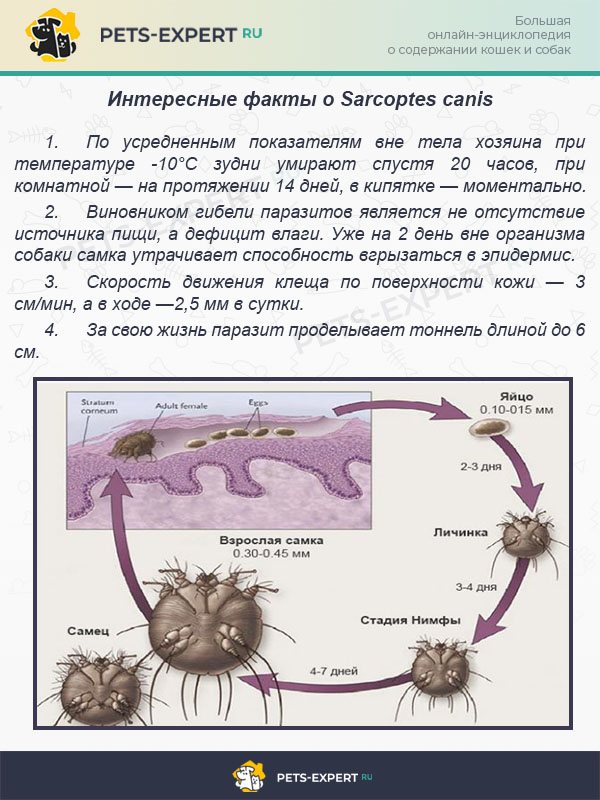

Interesting facts about Sarcoptes canis
The rhythm of the female's activity falls on the dark time of the day. In the evening and until midnight, the parasite gnaws the cells, lays eggs in them and makes a vertical window for the larvae to exit. In the second half of the night, the tick feeds on the cells of the epidermis. The female rests during the day.


Itching loves areas with a thick stratum corneum and lack of hair.
Pathogenesis of sarcoptic mange
You can become infected with scabies at any time of the year, but in the summer the clinical picture of the disease is more acute.
Features of the process:
- The carriers of the disease are sick dogs.
- The causative agents are teleonymphs and female ticks.
- The provoking factors are unbalanced nutrition, contamination of the skin and stressful situations for animals.


The peak of scabies activity is summer
Invasion is carried out during contact with infected individuals, through collars, combs and people whose clothes are itchy.


Process features
The inflammation is aggravated by the activation of the pyogenic microflora.
Characteristics of notoedrosis
Notoedrosis is a parasitic pathology caused by itching of the genus Notoedres cati. Ticks affect the deep layers of the skin, mainly on the head of the animal. The degree of damage to the skin is determined by the number of populations of the parasite.
Notoedres cati attack mainly cats. However, there have been cases of damage to rodents, dogs and humans.


Itching occurs due to the action of parasites on the nerve endings
Structural features of Notoedres cati
Compared to Sarcoptes canis, they are slightly smaller:
- female body length - from 0.2 to 0.3 mm;
- female width - from 0.2 to 0.25 mm;
- male body length - from 0.15 to 0.18 mm;
- width - from 0.12 to 0.14 mm.
Parasites have a similar structure. The only difference is the location of the anus. In Notoedres cati, it is located dorsally, in contrast to the terminal localization in Sarcoptes canis.
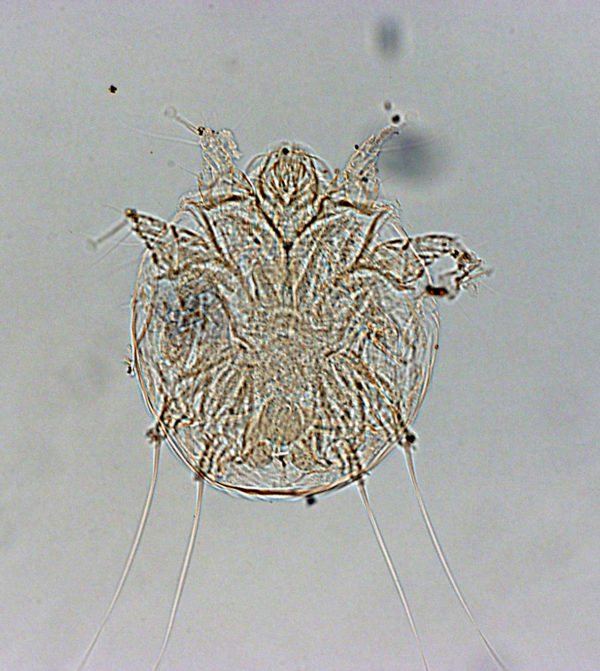

Appearance of Notoedrеs cati
Life cycle of Notoedres cati
The developmental stages of the parasite are similar to the cycle of Sarcoptes canis. The life span is 15 to 18 days. The number of eggs laid per day is from 2 to 8 pieces.
Pathogenesis of notoedrosis
Compared with sarcoptic mange, notoedrosis proceeds faster. Transmitted during direct contact between pets. The outbreak of the disease occurs in March. The spread of pathology is due to overcrowding of animals and unsanitary conditions of detention. The mechanism of existence of a tick in the epidermis is identical to Sarcoptes canis. The main difference is that the disease attacks mainly the head and neck. Less commonly, it affects the limbs, especially the hind ones.


Itching is the main symptom of itchy scabies.
Symptoms of sarcoptic mange and notoedrosis
The clinical pictures of sarcoptic mange and notoerosis at the first stage differ from each other. The main difference lies in the localization of the lesions.
Table 3. Differences between sarcoptic mange and notoedrosis
| Sarcoptic mange | Notoedrosis |
| It occurs in the thoracic region, on the peritoneum, at the base of the tail, on the head. The main difference is that the disease can affect the foreskin. | Pathology focuses on any part of the animal's head, even on the outer shell of the auricles. Inflammatory foci on the extremities are less common. |
Itching is a typical symptom of sarcoptic mange and notoedrosis. In rare cases, as with latent scabies, for example, the disease proceeds without visible lesions of the skin.
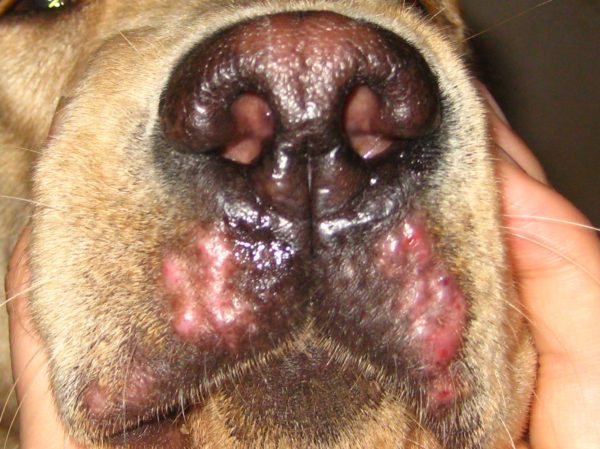

Allergic itching has similar symptoms to pruritic scabies.
In 90% of cases in animals infected with pruritic scabies, about when the dog is constantly tearing the edges of the ears. The same syndrome is observed with allergic itching.


Clinic of the disease
The skin on the damaged areas becomes rough, covered with folds and cracks.
Typical symptoms of pruritic scabies:
- ear-foot reflex;
- severe itching of the skin;
- crusts in lesions;
- restless behavior;
- loss of appetite;
- exhaustion;
- spotting under the scabs;
- a large amount of dandruff.
When you touch the ears, the dog involuntarily begins to scratch involuntarily.


In an advanced form of the disease, dogs lose a lot of weight
Disease development
At the first stage, redness appears on the skin, the pet begins to itch. Unfortunately, at this stage, the owners do not pay attention to the symptoms and are not even aware of the presence of the disease. After all, it is quite normal that the dog scratched itself and there is no reason to immediately examine the skin and suspect about the problem.
Next, small red dots, called pustules, begin to appear on the skin. They are filled with liquid, when the animal itches they burst. In places of pathological foci, wool begins to fall out, and the skin becomes very coarse. Tear-off skin particles also appear, they are very similar to dandruff.
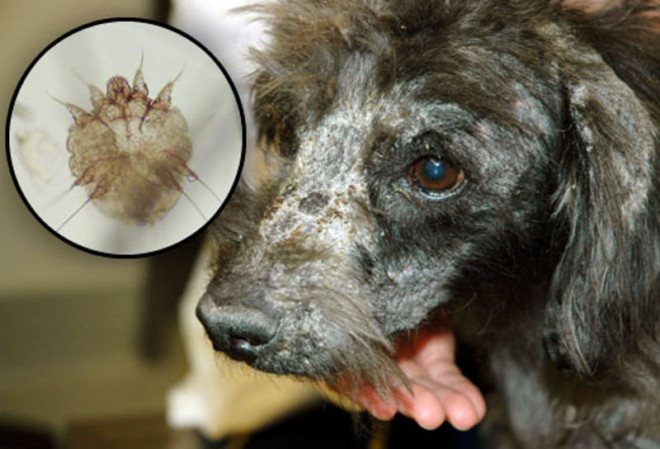

The skin condition worsens, loses its elasticity and coarsens. Moreover, when such areas are combed, the skin cracks and blood cracks appear. The condition of the coat also deteriorates significantly, in the lesions it falls out intensively, in other areas it fades. The dog refuses to eat and begins to lose weight a lot.
Quite often, other infectious diseases develop, which significantly complicates the general condition. It is worth saying that only a specialist can diagnose the disease after an examination. Everyone carries the disease in their own way, and the symptoms may differ.
Characteristics of heiletiosis
Heiletiosis is a parasitic disease of animals with a woolen cover, provoked by the activity of the Cheyletiella yasguri tick. The parasite attacks mainly dogs. The pathology is considered seasonal.


Among dog breeds, Poodles, lapdogs and Yorkshire terriers are most susceptible to heiletiosis.
Infection occurs in the following situations:
- contact with infected animals or hygiene items;
- crowded content;
- visiting grooming salons;
- unsanitary conditions in nurseries;
- walk in the street.
The parasites are carried by lice, flies and fleas. A female tick can live up to 10 days without a carrier.
The disease is difficult to diagnose. This is due to the fact that when washing and shearing animals, mites are washed off along with the detergent or remain on the cut hair. Therefore, before going to the veterinarian, it is advisable to refrain from any care procedures.
Structural features of Cheyletiella yasguri
Parasites of this species harm both food reserves and mammals. Due to the fact that they feed on both plant and animal food, they belong to the type of acariform ticks.


Cheyletiella yasguri appearance
Structure:
- female body length - from 0.35 to 0.38 mm;
- female width - from 0.21 to 0.22 mm;
- male body length - from 0.3 to 0.35 mm;
- male width - from 0.20 to 0.21 mm;
- color - light yellow;
- larva length - from 0.2 to 0.6 mm;
- egg size - 250 x 150 μm;
- number of limbs - 4;
- the number of eggs in a lifetime is 90.
The body is covered with hairs, scutes and tentacles on the sides. The fingers of the limbs are equipped with claws that allow the mite to attach to the hair.
Life cycle of Cheyletiella yasguri
Parasites inhabit and lay eggs in the hairline of dogs. They descend to the skin surface only for nutrition. Unlike pruritus, they do not make passages in the dermis. With the help of massive jaws, the mites cut a hole in the skin and suck out the tissue fluid.
If you arm yourself with a magnifying glass, you can see light yellow specks moving quickly over the pet's body. Due to the peculiarities of movement in English, Cheyletiella yasguri is commonly called “walking dandruff”, which means “walking dandruff”.
The developmental cycle is typical for cutaneous mites. Consists of 5 stages: egg → larva → protonymph → teleonymph → imago.


The transformation of the parasite from an egg to a mature individual lasts approximately 20 days.
The female has a lifespan of 4 to 6 weeks.
Pathogenesis of heiletiosis
Due to the microscopic size of the tick, waste products are not immediately visible on the animal. In the early stages, the disease is confused with dandruff. The longer the time the parasite spends on the pet's body, the more noticeable the pathological changes.
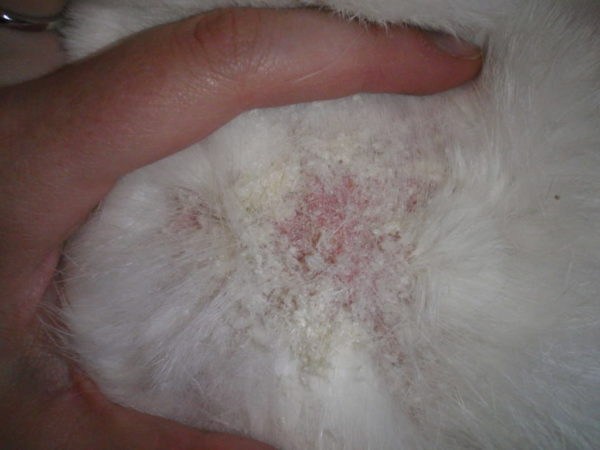

Colonies of Cheyletiella yasguri on the dog's coat resemble dandruff
More than others, puppies and young dogs, as well as animals suffering from suppression of immunity, are predisposed to heiletiosis.
The more water procedures and antiparasitic treatments, the slower the disease develops. Since the parasite is laying on the hair, eggs are washed off during hygiene measures. However, this does not stop the reproduction process, but only reduces the number of ticks.
Symptoms of heiletiosis
Acute contagious disease is accompanied by increased formation of skin scales in the neck and back. The sacrum is most often affected. Unlike other types of scabies, heiletiosis is not prone to severe itching.
The main symptoms are:
- oily skin;
- loss of hair;
- increased hairiness;
- rash;
- purulent formations and ulcers;
- dry gray scales;
- hyperpigmentation of the skin;
- decreased appetite;
- restless behavior.


Heiletiosis symptoms are most evident in puppies.
Symptoms are most pronounced in puppies 2 to 8 weeks of age. In addition to the pathological processes accompanying the disease, there is an increased activity of the sebaceous glands. This leads to increased dandruff formation. Sometimes babies look like they've been sprinkled with flour.
Characteristic of otodectosis
The disease is caused by the activity of Otodectes cynotis. They parasitize in the auricles.By analogy with fleas, ear mites do not invade the human dermis. However, they can provoke pseudo scab, which is an allergic skin reaction to bites. The parasite lives on the skin surface and feeds on epidermal scales, earwax and blood.


Lop-eared breeds are most susceptible to diseases
Structural features of Otodectes cynotis
This species resembles Sarcoptes canis in appearance:
- female body length - from 0.4 to 0.5 mm;
- female width - from 0.27 to 0.3 mm;
- male body length - from 0.31 to 0.39 mm;
- male width - from 0.21 to 0.29 mm;
- shape - oval;
- number of pairs of limbs - 4.
The intermediate stages of parasites have only 3 legs; in sexually mature individuals, the last pair is underdeveloped.
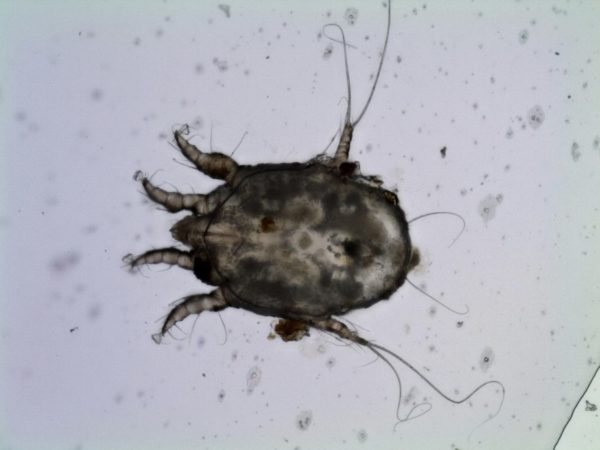

Otodectes cynotis appearance
Life cycle of Otodectes cynotis


Formation of a parasite
At the deutonymph stage, the female can already reproduce.
Pathogenesis of otodectosis
This type of mite does not penetrate the epidermis. Parasites live and multiply on the surface of the skin. The main food source is dead cells and lymph. Despite the fact that they do not penetrate into the dermis, irritation of the skin receptors is observed. As a result of the activity of Otodectes cynotis, inflammation of the canal begins. A large amount of scabby pus forms in the auricles.
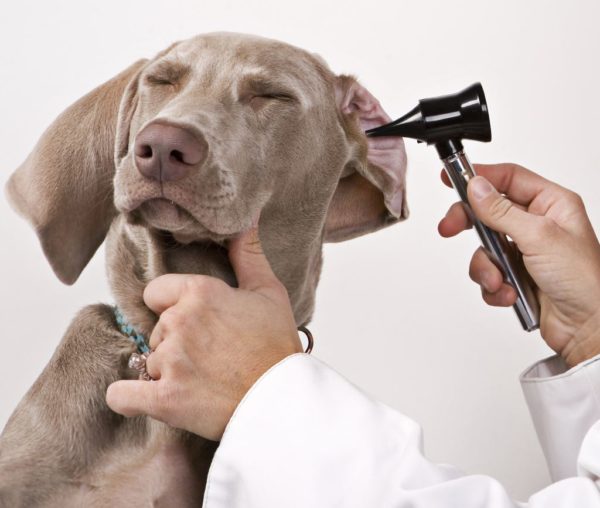

The main symptom of otodectosis is severe ear itching.
Infection occurs through contact with a sick dog. It is also possible to transmit otodectosis through the hygienic supplies of the animal. However, this variant of infection is less common, since the tick does not live long outside the host's body.
Symptoms of otodectosis
The pathological effect of parasites on the dog's body is characterized by several forms:
- damage to the skin;
- inflammation of the middle ear;
- intoxication with tick waste;
- the formation of favorable conditions for re-infection;
- the appearance of hypersensitivity at the next infection.
In advanced forms, the disease is aggravated by the development of pathogenic microflora, ruptured eardrum rupture and brain damage.
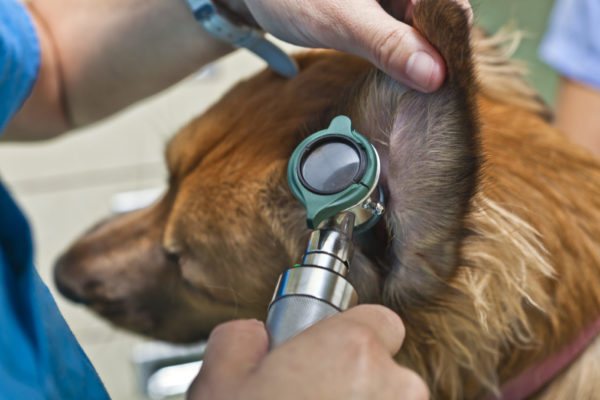

With otodectosis, rupture of the tympanic membrane is possible
The main symptoms are:
- redness of the auricle;
- purulent discharge in the ear;
- loss of appetite;
- restless behavior;
- increased body temperature.
The dog constantly shakes its head and rubs against any objects in an attempt to relieve the itching. This sometimes results in severe scratches that fester. Gluten appears in the ear, formed from the waste of the tick. The first symptoms are visible within 14 days after the introduction of the tick into the dermis. If the pet has sensitive skin, this period can be reduced to several days.
Unlike otodectosis, sarcoptic mange and notoedrosis do not occur on the surface of the auricles of animals. This is the main difference between ear scabies and pruritic scabies. In advanced forms, pathology can go to the head, which is extremely rare.
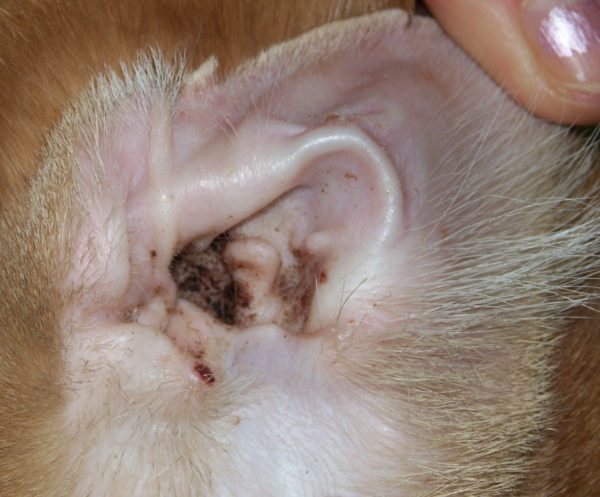

The main difference between sarcoptic mange and otodectosis is the defeat of the auricles in the second case.
Briefly about the disease
Scabies in dogs is caused by mites of the Sarcoptes family. Arthropods reproduce by laying eggs. Under the skin, ticks make special moves and lay eggs on the face, chest, back and near the ears of the animal.
Scabies is spread through infected pets that carry Sarcoptes. But contact is not required for infection. A pet can "catch" an ailment by using the objects of a sick dog, through the shoes of its owner.
Signs of sarcoptic mange
The onset of the disease in animals is characterized by redness of the scalp, neck, muzzle. These areas of the body are most susceptible to infection due to the lack of thick hair. Redness of the edges of the dog's ears and the itching reflex are also clinical symptoms of scabies.
As the disease progresses, the itching of the dog becomes permanent.Ears, eyebrow area, nasal bridge are covered with small knots, which very quickly turn into bubbles with liquid. During this period, crusts form on the skin, and the pet's hair begins to stick together. On the epidermis, wounds and scratches may occur due to regular scratching. The appearance of dandruff is possible. And in conditions of warmth and the included heater, the itching of the dog intensifies more than usual.
The next stage of sarcoptic mange begins with baldness: hair is lost abundantly on the head, then on the rest of the body. The dermis in the affected area becomes rough and cracked. From a sick individual "carries" a characteristic sour smell.
Dogs may also experience partial loss of strength in the muscles of the pelvic limbs, lethargy, weakness, fatigue.
There are times when the dog does not have any symptoms of scabies, but at the same time is its active carrier.
Lack of treatment turns acute sarcoptic mange into a chronic one. At the same time, the lymph nodes increase, the pigmentation of the skin increases. The quality of life of the dog is significantly deteriorating.
Only a veterinarian can determine the diagnosis. First, the specialist will exclude from suspicion many similar symptoms of the disease: atopy, dermatitis, pyoderma. Scabies differs from the listed ailments in constant itching, which cannot be defeated with steroids. Then, on the basis of laboratory studies and epizootic data, the veterinarian makes a diagnosis and prescribes treatment.
How to distinguish itchy scabies from other conditions
There are few diseases that have common symptoms with classic scabies. In appearance, there are similarities with demodicosis and allergic eczema.
Table 4. The difference between demodicosis and allergic eczema
| Disease | Symptoms |
| Allergic eczema | The clinical picture of the disease is as close as possible to pruritic scabies. The intensity of itching and the nature of the skin lesions are almost identical. A distinctive feature of allergies is the absence of scabs on the skin surface. Only redness and inflammation are present. Also, with this type of eczema, gluten is not released. |
| Demodecosis | For pathology, severe itching is not typical. Irritation is less common than with sarcoptic mange. Demodexes live in hair follicles that lack nerve receptors. However, skin rashes, redness and dandruff are often mistaken for itchy scabies. |
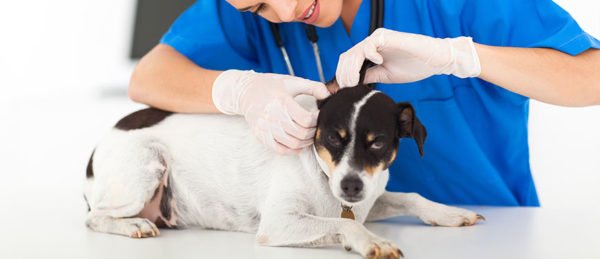

A specialist will help to make an accurate diagnosis
Diagnosis of scabies
Skin scraping is the main way to detect scabies.


The main diagnostic method for detecting the disease is microscopy
Features of the survey:
- By placing the scalpel parallel to the surface of the skin, scraping is done. The depth of immersion of the instrument into the epidermis is up to the formation of the first drops of blood.
- The resulting sample is placed on glass, treated with a special solution and analyzed under a small microscope magnification.
In about 40% of cases, the diagnosis gives a false negative result. It is not always possible to detect parasites that have invaded the deep layers of the epidermis. There are situations when the scraping was taken from the wrong area where the tick colony settled.
During the analysis, you should insist that the veterinarian take samples from several areas of the dermis. This will increase the diagnostic confidence.
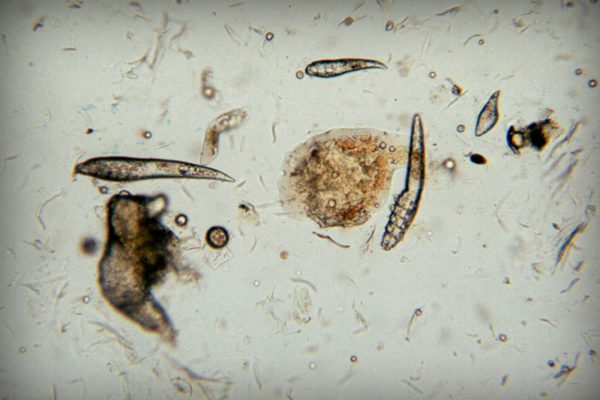

Eggs, larvae and mites in the lens of a microscope
Scabies treatment
With the timely detection of the disease, therapy can be carried out at home.
General rules:
- In winter, the processing of the animal is done in the apartment, in the summer - on the street.
- Pre-clean the damaged areas of the dermis from scabs using warm water and soap or 0.2% caustic soda solution.
- The hair near the foci of infection is cut and burned.
- The surface of the skin is treated with the medication prescribed by the veterinarian.
- After 4 days, re-sanitation is done.
- When using drugs containing acaricidal elements, you should exclude the possibility of licking the drug by the dog.
- In the process of processing, you need to adhere to the rules of personal safety and perform all manipulations with rubber gloves.
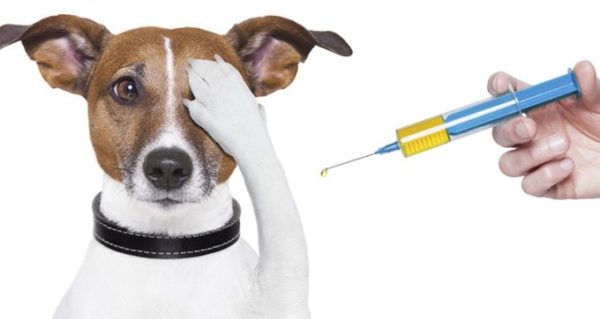

Individuals who have come into contact with an infected animal must also be processed.
The agents used to treat the disease have an effect on the metamorphic stage of the formation of pruritus. For embryonic, which lasts about 4 days, the effect of active substances does not apply. To completely get rid of the disease, on day 4 it is necessary to re-treat the skin surface and take antiparasitic drugs. This will eliminate the larvae that hatch after the first sanitation.


Intoxication of the body is an inevitable consequence of scabies
Table 5. Popular remedies for the treatment of pruritic scabies
| Category | Description |
| Oil solutions | They help well with the appearance of a large number of scabs:
|
| Aerosols | It is advisable to use in combination with oral medications. The following are popular among dog owners:
|
| Antiparasitic drugs | The main direction of treatment. Products based on selamectin, ivermectin and milbemycin oxime are used:
|
| Glucocorticoids | Steroid hormones are used to increase itching:
|
| Mixes | Traditional methods of treatment are used as concomitant, but not basic. The following mixtures are effective:
|


Tar is used as a complementary treatment for pruritic scabies
The duration of the course of treatment is indicated in the instructions for the drugs. In an advanced form of the disease, therapy can take up to 8 weeks.
Ivermectin is not suitable for the Collie breed. The use of this remedy is dangerous for the pet's life.
Sometimes, after taking drugs, the dog has the following side effects:
- muscle tremor;
- failures in the work of the heart;
- rapid breathing.
If such deviations occur, a 4% solution of atropine sulfate should be injected subcutaneously.
Overuse of antiparasitic agents is a common mistake. If, after the standard course of treatment, the dog's skin continues to itch, you should not purchase a new, more effective drug and undergo repeated therapy. Severe itching after treatment is the body's response to the killed parasite, which disappears within 1 week. The new course of treatment leads to increased itching and the appearance of allergic dermatitis.
Method M. Demianovich and M. Khatin
General rules:
- 30% sodium hyposulfite solution.
- 10% hydrochloric acid solution.
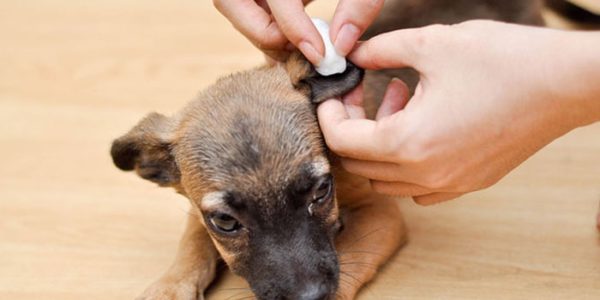

The method of M. Demianovich and M. Khatin is an effective way to get rid of itchy scabies
Treatment of the skin surface is carried out in a warm room. At the end of the procedure, it is ventilated. Solution No. 1 is heated before use and rubbed into the dermis. Each affected area is given at least 1 minute. When crystals appear on the skin, re-treatment with liquid is done. After 10 minutes, rub in Solution No. 2. When it dries, the sanitation is repeated several more times with a 5-minute break. Wash off after 3 days using detergents.
Sodium hyposulfite has an unpleasant sulfurous odor and causes discomfort when applied to the skin.
Folk methods
Popular "medicines" like apple cider vinegar and iodine do not have the desired effect. Exposure to these agents leads to skin irritation and increased inflammation.


The use of apple cider vinegar is contraindicated in the treatment of scabies
Among the home treatment methods, therapy with sulfuric and sulfur-tar ointment stands out. The drugs are effective, but they have a number of disadvantages:
- a large number of treatments;
- unpleasant odor;
- non-absorbent petroleum jelly base;
- the constant need to distract the dog from licking the treated areas.
Rubbing is done within 7 days.
Prevention of scabies
To exclude the possibility of scabies in a dog, a number of simple preventive measures should be followed.
General rules:
- Examine the animal every day.
- Isolate infected dogs from healthy dogs in a timely manner.
- Periodically treat bedding and hygiene items with 2% chlorophos emulsion or hexachloran-creolin products.
- In contact with diseased individuals, boil clothing for at least 10 minutes.
- Regularly carry out antiparasitic cleaning of the premises.
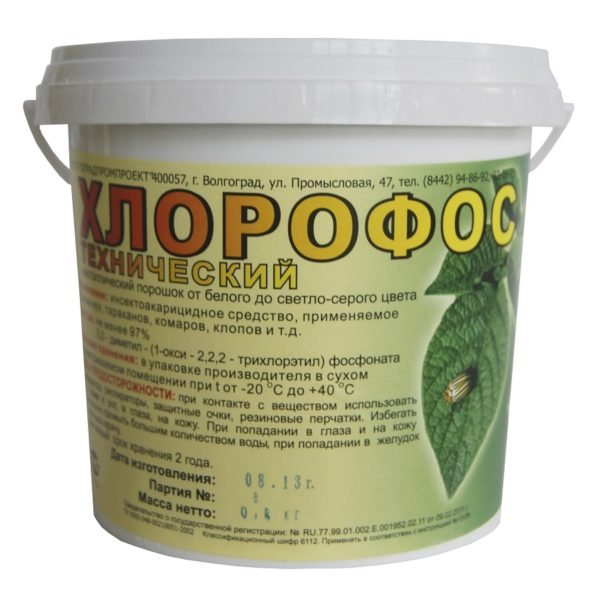

Chlorofos is used to disinfect the premises.
You should also avoid direct contact of the pet with stray cats and dogs.
Preventive measures
When a dog has scabies, preventative measures must be followed. The fact is that the scabies mite parasitizes only on the body and does not leave it, but at the same time, some individuals, as well as eggs, can fall on the dog's bedding, places where they play, rest.
To exclude re-infection, it is necessary to regularly wet cleaning using disinfectants. It is also necessary to change the dog's bedding daily. During washing, add a little bleach or bleach to the bedding to kill possible parasites in it. Eggs of mites are very resistant to external factors, in order to get rid of them in the litter or on other textiles, you need to iron things with an iron, and exposure to direct sunlight will also help.


With these diseases, it is advisable to limit the places of the dog's pastime. This is done in order to make it easier to cope with scabies mites. This minimizes the likelihood that parasites will get on other surfaces in the apartment and thereby exclude the possibility of re-infection.
If there are children in the apartment, contact between them should be minimized. But at the same time, a sick dog needs to pay a lot of attention, she should not feel deprived or abandoned, since such an emotional state can negatively affect overall health. For example, children can continue to pay attention, throw toys, treat with something, but temporarily stop hugging the animal. Likewise, adults should support the animal, play with it, and not only treat and feed it.


Remember that disease weakens the animal's immune system. Therefore, upon completion of the course of treatment, the animal should receive vitamins and general health-improving agents, also pay attention to the dog's diet, it should help restore strength.
Is it possible to get scabies from a dog
On the territory of the Russian Federation, about 1,000,000 people fall ill with scabies every year. However, this type of disease has nothing to do with itchy scabies in animals. The only variation of the disease that can be associated with infection from a pet is pseudo scab, but it has a different etiology.


Itchy scabies is not spread from dog to person
Of all the representatives of the animal world, only monkeys suffer from "human" scabies. The causative agent of this pathology is not the itch mite of dogs, but Sarcoptes scabiei.
Ticks from dogs, cats and other animals do not take root in the human epidermis. Therefore, they cannot cause true scabies.On human skin, parasites die within 1-2 weeks. Pseudo scab does not require treatment except for symptomatic relief of itching.
Summing up
If your pet is infected with scabies, analyze the situation and identify for yourself the places where this could happen, avoid them on subsequent walks. Watch the behavior of your pet, at the first suspicion of a disease, do not expect that everything will pass by itself and do not self-medicate, immediately contact your veterinarian, so you will not allow complications and quickly cope with parasites.
Now there are a huge number of drugs that are used to protect animals from different types of parasites. This allows you to avoid infection and be calm about your pet's health. To choose the most effective and safe drug, you need to contact your veterinarian.
A timely diagnosed disease, including scabies, is provided for quick treatment and is not accompanied by complications.



